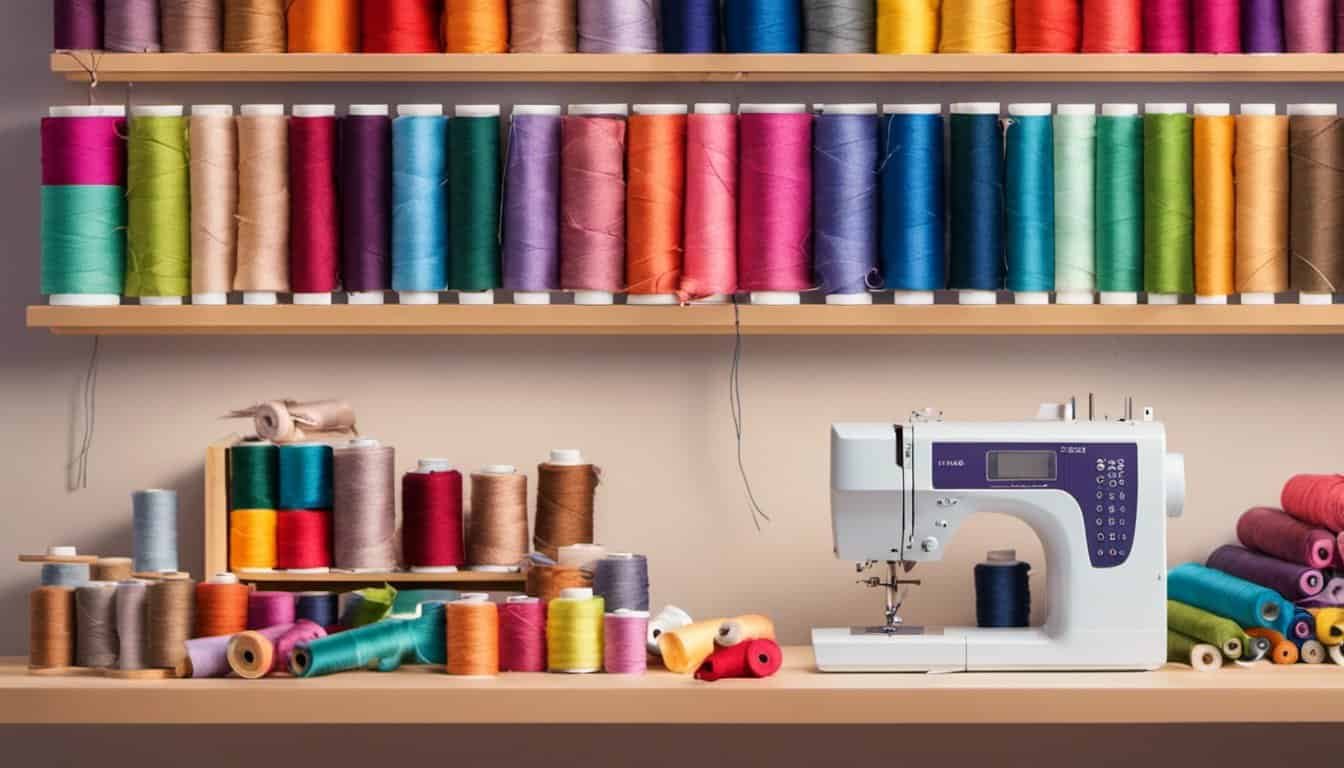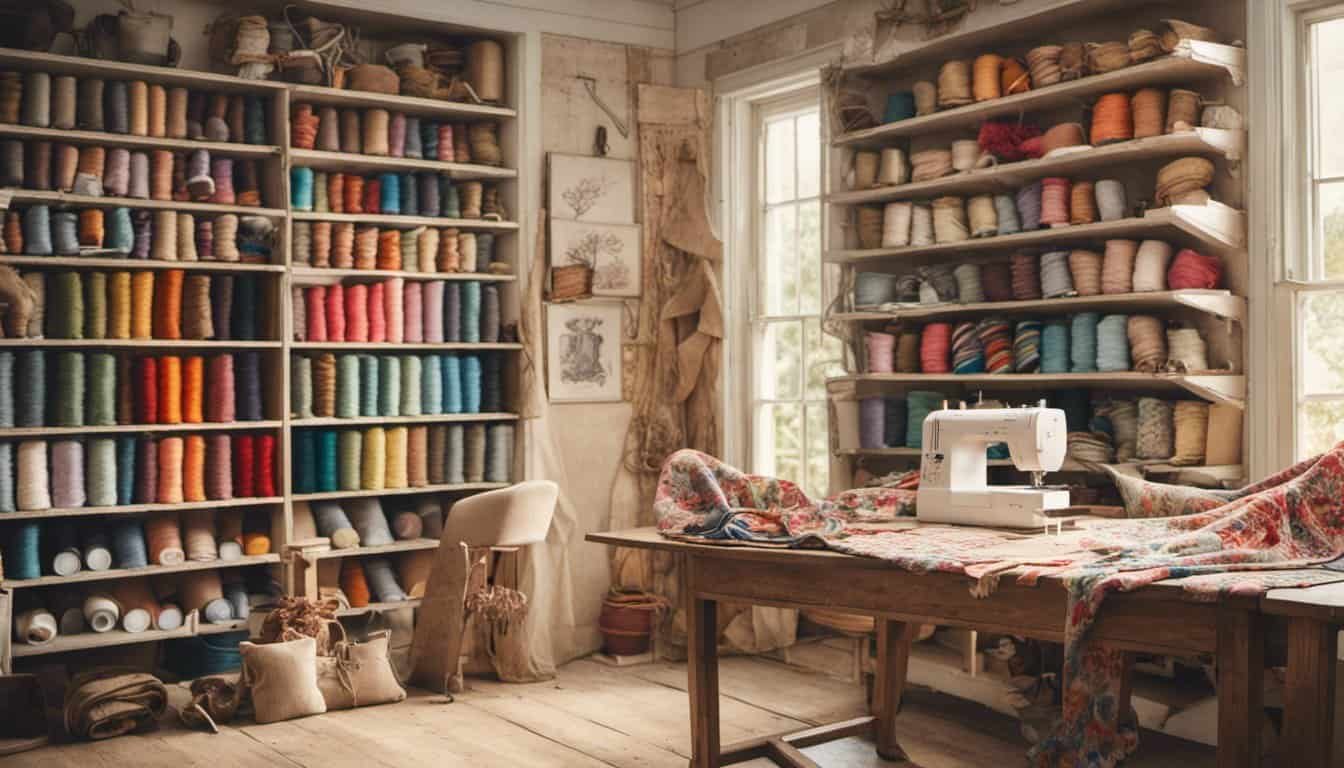Sewing your own clothes is such a rewarding experience, and a peplum top is the perfect project to kickstart your journey. It’s stylish, versatile, and surprisingly beginner-friendly. Whether you’re looking to refresh your wardrobe or try your hand at something creative, this project will have you hooked on sewing in no time.
Materials Needed
For sewing a peplum top, gathering the right materials ensures a smooth experience and better results. Here’s what you’ll need to get started.
Fabric Selection
Choose lightweight, breathable fabrics for comfort. Cotton, linen, or light polyester blends work well for peplum tops. For extra drape, consider chiffon or rayon. Select a fabric with a width of 44–60 inches, and a length of 1.5–2 yards depending on your size. Pick solid colors or small prints for beginner-friendly patterns that are easier to work with.
Tools and Supplies
- Sewing Machine: A basic machine with straight and zigzag stitch options is sufficient.
- Thread: Match the thread color to your fabric or use a slightly darker shade for contrast stitching.
- Scissors: Fabric scissors for cutting and small scissors for trimming are essential.
- Measuring Tape: Use this to take accurate body measurements and mark fabric.
- Pins or Clips: Secure fabric pieces together during assembly.
- Marking Tools: Tailor’s chalk or water-soluble pens help mark seams and darts.
- Iron and Ironing Board: Press seams and fabric edges as you sew for a polished look.
- Pattern Paper: Use a sewing pattern designed for peplum tops or trace one.
These materials make sewing manageable and enjoyable for beginners.
Preparing Your Pattern
Having the right pattern and accurate measurements is key to sewing a well-fitted peplum top. Taking the time to prepare your pattern ensures a smooth sewing process and better results.
Choosing the Right Pattern
For beginners, I recommend selecting a simple peplum top pattern with clear instructions. Look for patterns labeled as “beginner-friendly” or “easy” from trusted brands like Simplicity, McCall’s, or Butterick. These typically include detailed guides and fewer, more manageable pieces.
Ensure the pattern matches your desired style, such as sleeveless, short-sleeved, or long-sleeved designs. Check the recommended fabric types listed on the pattern to confirm they align with what you’ve already chosen. For example, lightweight fabrics like cotton or linen often work best for peplum tops.
Measuring and Cutting the Fabric
Before cutting, I wash, dry, and press the fabric to pre-shrink it and remove any creases. Next, I lay the fabric on a flat surface, ensuring it’s smooth with no folds or wrinkles.
Using a flexible measuring tape, I measure myself at the bust, waist, and hips and choose the pattern size that aligns with these measurements. If my measurements fall between sizes, I opt for the larger size and adjust later during fitting.
I pin the pattern pieces to the fabric securely, following the suggested layout on the instruction sheet. Patterns often include directional arrows, so I ensure I place the pieces in line with the fabric’s grainline for optimal fit and drape. Using sharp fabric scissors, I cut the fabric carefully along the edges of the pattern, leaving no jagged edges or inaccuracies.
Sewing the Bodice
Sewing the bodice creates the foundation for your peplum top. Accurate assembly and shaping techniques ensure a polished, professional result.
Assembling the Pieces
I start by laying the cut fabric pieces on a flat surface, aligning the bodice front and back with right sides facing each other. Using pins, I secure the shoulder and side seams to prevent movement. Then, I sew these seams with a straight stitch, maintaining a 1/2-inch seam allowance or as indicated on the pattern. After stitching, I press the seams open with my iron for a neat finish.
If your pattern includes optional lining, I sew the lining pieces in the same way as the main fabric. I attach it to the bodice, keeping the right sides together and sewing along the neckline and armholes. Trimming excess fabric and clipping curves ensures smooth edges when turning the lining inside out.
Adding Darts for Shape
Darts add structure and enhance the fit of the bodice. I mark dart placement on the wrong side of the fabric using my marking tool and the pattern’s guidelines. Folding the fabric at each dart, I align the marked edges and secure them with pins.

I sew from the widest point of the dart to its tip in a straight line, backstitching at the start for durability. Once sewn, I press the dart toward the center or downward, as instructed by the pattern. This step creates flattering contours, making the bodice fit comfortably and accentuating the waist.
Creating the Peplum
Adding a peplum to the bodice creates the signature flared silhouette of this top. Precise cutting, gathering, and attaching ensure a professional finish.
Cutting the Peplum Section
I start by laying out the fabric flat, ensuring it’s free of wrinkles. Using the pattern piece for the peplum, I align it with the fabric’s grainline for a balanced drape. I pin the pattern securely, then cut the fabric with sharp scissors or a rotary cutter for clean edges.
If the pattern requires multiple panels for the peplum, like front and back pieces, I ensure each is cut accurately and labeled. For a fuller shape, some patterns may call for circular or semicircular cuts. I carefully follow the pattern lines to avoid uneven edges. Always mark notches or guidelines from the pattern to match edges easily later.
Gathering and Attaching the Peplum
To create gathers, I sew two parallel rows of long basting stitches along the top edge of each peplum piece, leaving long thread tails for gathering. Holding these tails, I gently pull to create even gathers that fit the width of the bodice’s bottom edge. I adjust the gathers so the fullness is distributed evenly before anchoring them with pins.
« How to Sew a Blouse with Button Details Like a Pro (Even if You’re a Beginner!)
Master Sewing Potholders: A Quick Project Perfect for Beginners & Gift Ideas »
With the right sides of the fabric together, I align the gathered edge of the peplum to the bottom of the bodice, matching the notches and side seams. I secure the layers with pins, then sew them together using a straight stitch and the recommended seam allowance. Pressing the seam upward toward the bodice ensures a crisp join and eliminates bulk.
Finishing Touches
A polished finish enhances the overall look and quality of your peplum top. Neat hemming, sturdy seams, and secure closures give your project a professional appearance.
Hemming and Seams
Hemming creates clean edges while seams secure the fabric and add durability. Start by folding the fabric edge of the peplum section under by 0.25 inches, then press it with an iron. Fold it again by another 0.5 inches, press, and pin it in place. Use a straight stitch close to the inner fold to sew the hem, keeping it even along the entire edge.
Pressing the completed hem with steam sharpens its appearance. For seams, finish raw edges to prevent fraying. Use a zigzag stitch, pinking shears, or a serger for this step. Press all seams flat to ensure they lie smoothly and maintain the top’s professional structure.
Adding Closures
Closures ensure your peplum top stays secure while worn. Depending on your pattern, choose options like an invisible zipper, buttons, or a hook-and-eye closure. For zippers, align the edges of the back opening, pin the zipper in place, and sew using a zipper foot for precision. Check alignment regularly while stitching to avoid shifting.

If using buttons, mark equally spaced positions along the button placket. Sew the buttons by hand or with a machine and create matching buttonholes using a buttonhole foot. For hook-and-eye closures, stitch them to the inner edge of the fabric, ensuring they align precisely when closed.
Tips for Beginners
Sewing a peplum top may seem daunting at first, but following a few tips can make the process enjoyable and rewarding. By avoiding common mistakes and practicing regularly, beginners can build confidence and improve their skills.
Common Mistakes to Avoid
Skipping fabric preparation often causes issues. Wash, dry, and press your fabric before starting to prevent shrinkage or distortion after the top is finished.
Ignoring seam allowances leads to incorrect sizes. Use a ruler or gauge to ensure precise seam allowances as indicated in the pattern.
Rushing through measurements creates a poor fit. Measure the bust, waist, and hips accurately and double-check your numbers before cutting the fabric.

Neglecting to pin securely results in shifting fabric. Use plenty of pins to hold everything in place before sewing.
Overlooking notches or markings complicates assembly. Transfer all pattern markings to the fabric using tailor’s chalk or a fabric-safe pen.
Practice Makes Perfect
Start with simple patterns to get familiar with sewing techniques. For example, practice sewing straight and curved seams on scrap fabric before moving to your peplum top.
Repeat basic techniques like hemming and inserting darts to enhance consistency. The more you practice, the more polished your work looks.
Experiment with test fabric to refine skills. Use inexpensive, similar-weight fabric to the one for your top to test stitches and adjustments without fear of wasting your primary material.

Take your time to review each completed step. Slowing down ensures accuracy, allowing you to catch errors early.
As your skills grow, branch out into more complex patterns or fabrics, gradually building your expertise.
Conclusion
Sewing a peplum top is such a fun and creative way to dive into the world of garment-making. It’s amazing how a few simple steps can transform fabric into something stylish and uniquely yours.
Don’t stress if things aren’t perfect on your first try. Every stitch is a step toward building your skills and confidence. With practice and patience, you’ll be crafting outfits that truly reflect your personal style in no time.
So grab your materials, take it one step at a time, and enjoy the process. Sewing is all about creativity and self-expression, and your peplum top is just the beginning of what you can create!


















